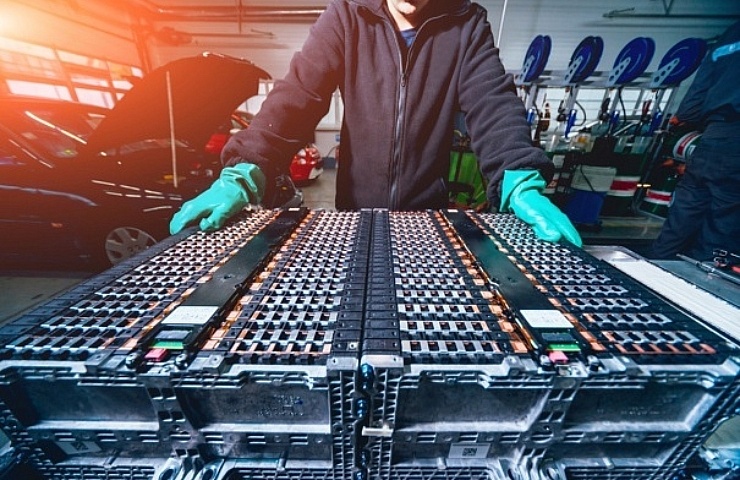Contents
The simple answer is that electric vehicles are designed to last the lifetime of the vehicle. If an uncommon and unlikely problem arises, the manufacturer’s battery warranty should cover replacement costs. The federal government mandates eight years or 100,000 miles of coverage (whichever comes first). California ups the warranty to 10 years or 150,000 miles.
With age and use, some minor degradation of an EV battery is common. An EV battery is considered at the end of its life when it reaches approximately 70 percent of its original driving range on a full charge. In reality, the track record for EV batteries has been excellent. Most EVs that are 10 years old are still on the road with only minor reduced range. EVs commonly provide hundreds of miles of driving range. The average driver in the US drives less than 40 miles per day.
What Does It Cost To Charge an EV?
Charging at Home
One of the top concerns for those considering the purchase of an EV is the cost of charging: Is it more or less than filling the tank of an ICE vehicle? The simple answer is that home charging, on a per mile basis, is a fraction of the cost of gasoline—about one-third the cost.
About 90 percent of EVs charge at home overnight when electricity prices are the cheapest. You can charge your EV at home using a standard 120-volt outlet, but that takes a lot longer. Most EVs come with a portable charging cable, either standard or available as an option. But most EV drivers will want to install a 240-volt Level 2 home charger system.

ChargePoint Home Flex level 2 EV charging station
A Level 2 uses a typical 240-volt power source—the same voltage used for large appliances like a clothes dryer. With this output, most EVs will easily achieve a full charge in the garage or driveway overnight. As a rule of thumb, you can add about 25 miles of range for every hour of charging.
Additionally, there are no safety issues when outside in rain or snow. You’ll need to purchase the charger and parts, and hire an electrician for installation. Expect to pay about $500 for the charging unit and a few hundred dollars for installation. Many local utility companies and states offer generous incentives for purchase and installation.
Shop now for EV charging stations
Charging a Kia IONIQ 5 EV while grocery shopping
Charging at Public Stations
Most public charging stations—the kind you find in parking garages, shopping centers, or office buildings—offer Level 2 charging, the same as a home charging station. For road trips, EV drivers use DC fast chargers.
DC fast chargers range in output from 50 kW to 350 kW and can recharge an EV battery up to 80 percent in about 30 minutes. While charging at home is much cheaper than filling up at a gas station, the cost of using public DC fast-charging station is similar to the price at the pumps. In other words, for nearly all EV charging, electric fuel is a fraction of the cost versus using gasoline internal combustion. For the occasional road trip, highway charging costs about the same as gas or diesel.
Several EV automakers include a certain amount of public fast-charging free for the first years of ownership.
What Is Battery kWh (Kilowatt Hours)?
Internal combustion engine (ICE) vehicles are measured by horsepower. EVs are measured in kilowatts (kW) and kilowatt hours (kWh). The size and capacity of the battery is measured in kWh (similar to an ICE’s gas tank in gallons), while the power needed to charge the battery and the motor’s output is measured in kW.
It’s easy to convert an EV motor’s output from kilowatts to horsepower: multiple by 1.34. An EV’s 150-kw motor produces about 200 horsepower.
Regarding battery capacity, the higher the kWh, the longer than the range (and, to some extent, the more powerful the car). Of course, batteries deplete faster when pushed to the max.
For example, the Chevrolet Bolt, which sells for around $30,000, uses a 65-kWh battery pack to provide 247 miles of range on a single charge. On the other end of the spectrum, the Lucid Dream Range EV, for about $170,000, uses a 118-kWh battery and delivers a 520-mile driving range.
What Kind of Batteries Do Electric Vehicles Use?
Whether you’re considering a hybrid-electric vehicle (HEV), plug-in hybrid-electric vehicle (PHEV), or battery-electric vehicle (BEV or just EV), the most common base metals in the batteries are aluminum, copper, and iron. More expensive rare earth metals such as lithium, nickel, manganese, graphite, or cobalt are refined, added to the base, and made into batteries.
It’s expensive to extract and transport these rare metals from the earth, which adds to the EV’s costs. Each of these metals produces different performance characteristics, such as more energy storage or enhanced safety.

Tesla Model Y AWD long range battery pack
Most EV manufacturers use lithium-ion for their batteries, similar to what we find in smartphones and laptops. While battery cells are small and usually round (or in a pouch), EV batteries are not a single unit. They consist of hundreds of cells bound into a single pack weighing hundreds of pounds. Generally, a larger number of bound cells means greater battery capacity, resulting in more miles on a full charge.
Shop now for electric vehicle batteriesLithium-ion batteries are best suited to PHEVs and BEVs due to their high energy density, quick recharging cycles, and ability to retain that energy-storage capacity over thousands of recharge cycles. Hybrids often use nickel-metal hydride batteries due to longer life cycle and relatively lower cost.
Within each cell are two electrodes: one anode (positive) and one cathode (negative). When the vehicle is powered on, electrons move from the cathode to the anode and generate a current, delivering power to the EV’s electric motor, which drives the wheels. When recharging the battery cells, the electrons travel in the opposite direction—from the power source (the grid) into the cells.
Extending the Life of the Battery
Cold temperatures limit the speed at which EVs can charge and reduce their travel distance. However, the biggest enemy of electric car batteries is heat. Avoid operating and charging your EV in high temperatures if possible. Charge your EV during the coolest parts of the day and keep it in a garage whenever possible. Most lithium-ion battery packs perform best between 50 and 85 degrees.
Shop now for electric vehicle batteries





